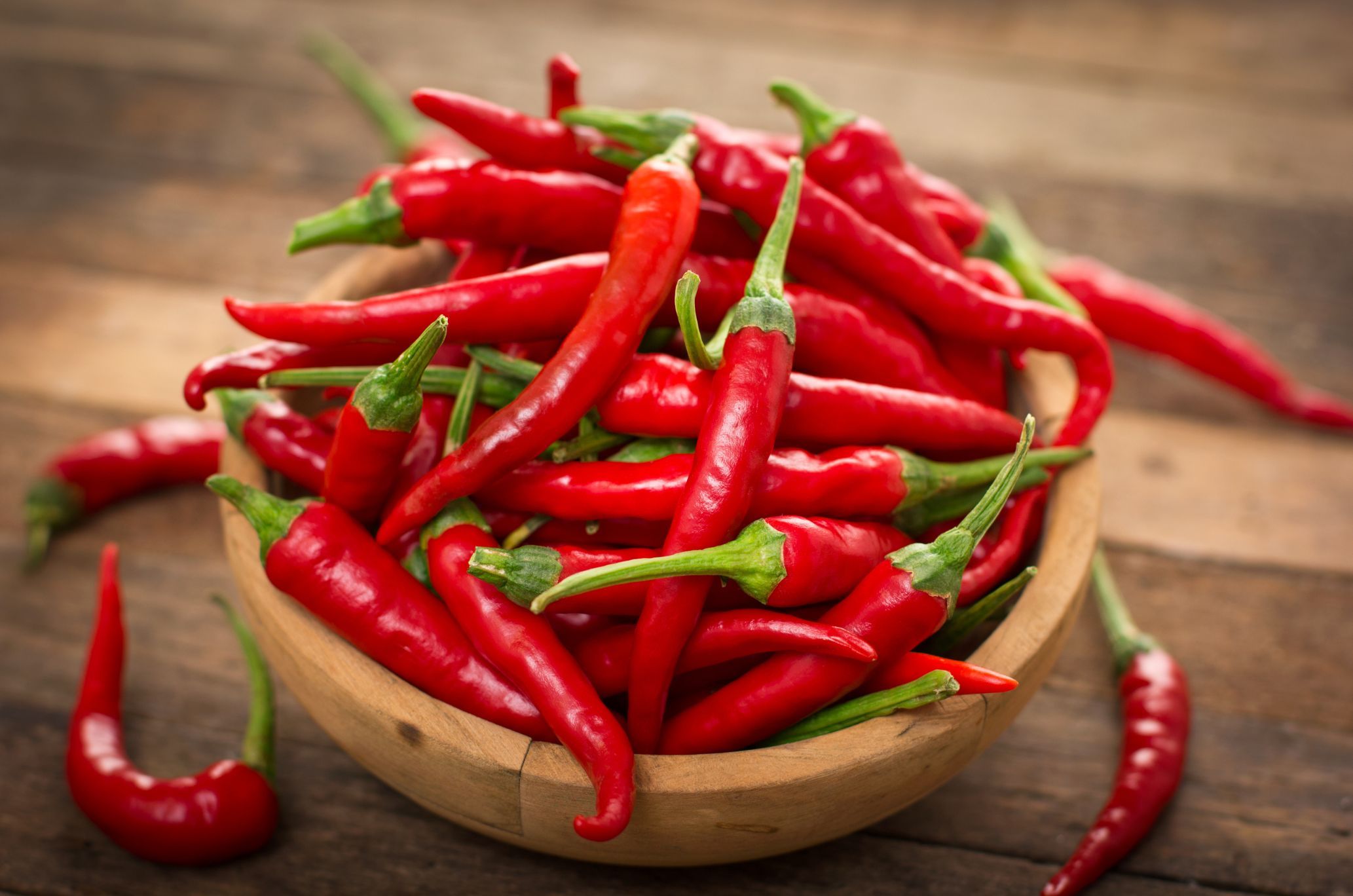
Apr 25, 2025
Top Vietnamese Fruits Gaining Popularity in Taiwan This Year
Discover why Vietnamese tropical fruits like durian, mango & coconut are taking over Taiwan’s market in this year. Taste the trend now!

Pepper varieties offer an amazing range of flavors and uses. From adding a kick to your favorite dish to boasting potential health benefits, peppers are a culinary staple around the world. Let's explore some of the most popular types and their nutritional value!

Black pepper, often called the "King of Spices," has a rich history dating back centuries. Originating in India, it quickly became a valuable commodity traded across continents. It's derived from the dried berries of the Piper nigrum plant, commonly known as black peppercorn.
Black pepper comes in several forms: whole peppercorns, cracked pepper, and ground pepper. Whole black peppercorns offer the freshest flavor and aroma when freshly ground. Cracked pepper provides a coarser texture and robust taste, while ground pepper is convenient for everyday culinary uses. Its flavor profile is characterized by its sharp, pungent bite and warm, woody notes.
The benefits of black pepper extend beyond its culinary applications. It contains a compound called piperine, which may aid digestion and nutrient absorption. Some studies suggest that piperine might have anti-inflammatory properties and support the immune system.

White pepper, derived from the same plant as black pepper, offers a milder flavor. Available as white pepper powder or white pepper whole, it's often used in light-colored dishes where black specks might be undesirable. White peppercorn undergoes different processing methods, resulting in its distinct color and slightly fermented taste.
Culinary applications for both black and white pepper are endless, enhancing everything from savory meats and vegetables to soups and sauces. Keep an eye out for a future article detailing more black pepper benefits, where we'll delve into its potential effects on cardiovascular health and blood sugar regulation.
Cayenne pepper is known for its fiery kick and vibrant red color. Derived from the Capsicum annuum plant, it packs a significant punch. Its intensity is measured using Scoville Heat Units (SHUs), and cayenne pepper typically falls in the range of 30,000-50,000 SHU. We'll explore the Scoville Scale in detail in an upcoming post!
Beyond its heat level, cayenne pepper boasts several potential health benefits. Some studies suggest it may aid in weight loss by boosting metabolism through a process called thermogenesis. Cayenne pepper contains capsaicin, a compound that has been investigated for its pain relief properties. Additionally, cayenne pepper may support cardiovascular health and improve circulation. Stay tuned for a future recipe collection that makes the most of this incredible spice.

Bell peppers are a colorful and versatile vegetable that add sweetness and crunch to various dishes. They come in a range of colors, including green, red, yellow, and orange, each offering slightly different flavor profiles and nutritional value.
Green bell peppers have a slightly bitter taste and are less sweet than the other colors. Red bell peppers are the sweetest and most mature, while yellow and orange bell peppers offer a balance of sweetness and mildness. These peppers are rich in vitamins, particularly vitamin C, and minerals. They also provide dietary fiber, contributing to their overall nutritional value and potential benefits for digestion.
From stuffed peppers to salads and stir-fries, bell peppers can be incorporated into many recipes. Look out for linked recipes in the future that showcase their culinary uses and highlight their nutritional benefits.

Chili pepper is a broad category encompassing numerous varieties, each with varying levels of heat and flavor. From mild jalapeños to scorching habaneros, there's a chili pepper for every palate and heat level preference.
Jalapeños are a popular choice for adding a moderate amount of heat, while serrano peppers offer a slightly more intense kick. Habaneros are known for their extreme heat and fruity flavor. The heat in these peppers comes from capsaicin, the compound responsible for the burning sensation and potential pain relief properties associated with spicy foods.
Chili peppers not only add flavor and heat to dishes but may also offer health benefits. Some studies suggest that regular consumption of chili peppers might support cardiovascular health and aid in blood sugar regulation. However, more research is needed to confirm these potential benefits.

When selecting fresh peppers, look for firm, unblemished skin and a vibrant color. Avoid peppers with soft spots or wrinkles. To maximize shelf life, store peppers in the refrigerator to maintain their freshness and flavor. Bell peppers typically last longer than chili peppers.
Consider the nutritional value when choosing peppers. Most varieties are excellent sources of vitamins, particularly vitamin C, and provide minerals and dietary fiber. The processing methods used can affect the nutrient content, so fresh peppers often offer the most nutritional benefits.
Conclusion: The world of pepper varieties is vast and exciting, offering a range of flavors, heat levels, and culinary possibilities. From the familiar black pepper to the fiery chili pepper, there's a pepper to suit every taste and potentially support various aspects of health, from digestion to the immune system. Start experimenting and discover your favorite today! Learn more about the Scoville Scale in our upcoming article.
Q: What is the Scoville Scale?
A: The Scoville Scale is a measurement of the pungency (spiciness or "heat") of chili peppers, as recorded in Scoville Heat Units (SHU) based on the concentration of capsaicinoids. Capsaicinoids are the chemical compounds that stimulate heat receptors in the mouth.
Q: What are the health benefits of cayenne pepper?
A: Cayenne pepper is believed to offer several potential health benefits, including aiding weight loss through thermogenesis, reducing pain, improving circulation, and supporting cardiovascular health. However, more research is needed to confirm these claims.
Q: How should I store bell peppers?
A: To store bell peppers and maximize their shelf life, keep them unwashed in a refrigerator crisper drawer. They can typically last for one to two weeks when stored properly.
Q: Which bell pepper is the sweetest?
A: Red bell peppers are the sweetest because they are the most mature, offering a higher sugar content and nutritional value compared to other colors.
Q: What are some popular chili pepper varieties?
A: Popular chili pepper varieties include jalapeños, serranos, habaneros, and ghost peppers, each with varying levels of heat and capsaicin content.
Q: How can I reduce the heat of a chili pepper in a dish?
A: You can reduce the heat of a chili pepper in a dish by removing the seeds and membranes, or by adding dairy products, sugar, or acidic ingredients like lime juice or vinegar. These methods can help balance the heat level in your culinary creations.

Apr 25, 2025
Discover why Vietnamese tropical fruits like durian, mango & coconut are taking over Taiwan’s market in this year. Taste the trend now!

Apr 24, 2025
Black pepper Vietnam suppliers lead the global market. Discover the top 5 in 2025, learn how to import high-quality pepper, and source the best for your business.

Apr 23, 2025
Major coffee exporters like Brazil, Vietnam, Colombia, India, and Indonesia shape the 2025 global coffee market. Discover their unique contributions and future trends.